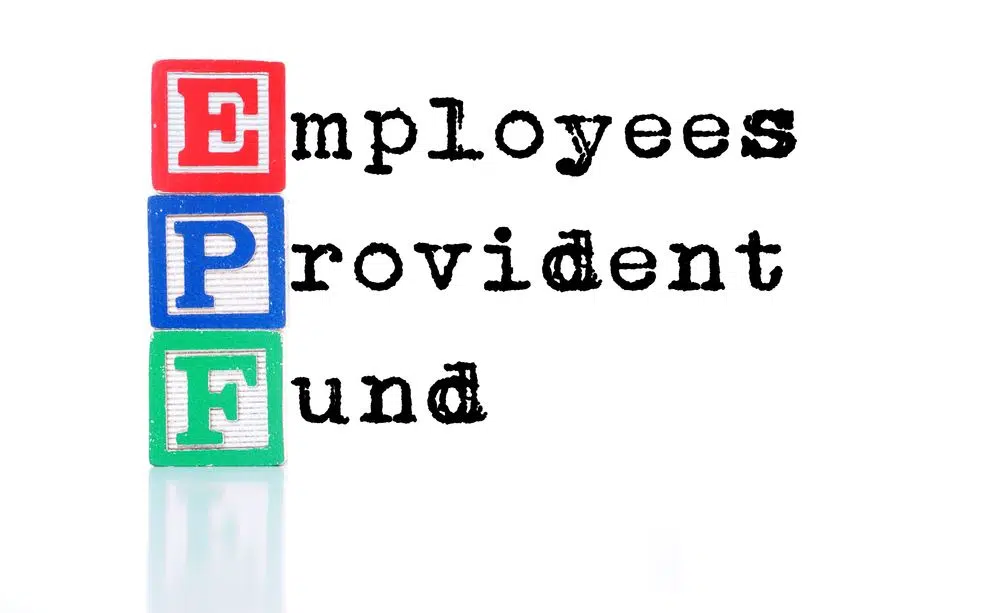Published
Employee Provident Fund (EPF): A Complete Beginner’s Guide to Understanding
Table of contents

Employee Provident Fund (EPF) stands at the forefront of financial security for almost every single employee in India. It is a compulsory savings scheme formulated by the Government of India, ensuring a stable and financially secure future for individuals after retirement.
Administered by the EPFO, i.e., Employees Provident Fund Organisation, this contributory fund motivates both the employer and employee to make monthly contributions from their earnings. Today, in this blog, we will understand everything about EPF and provide a solid foundation for understanding its essential aspects.
What is EPF? How does it work?
Designed to provide financial stability and security to employees upon retirement, EPF is a mandatory savings scheme in our country. Here, a percentage of the employee’s salary and a matching contribution from the employer are directed toward the EPF account.
For those who are not aware, the EPF scheme encompasses two components: the EPF and the Employees Pension Scheme (EPS). A major portion goes into the EPF, and a smaller portion is allocated to the EPS, ensuring that employees receive a pension after retirement.
Keep in mind that the contributions made to the EPF are subject to a fixed interest rate, which is declared by the EPFO every year. The interest is compounded, fostering the growth of the fund over the years. The accumulated total amount can easily be withdrawn by the employee upon retirement or even can be utilized for various purposes. This can be housing, higher education, etc.,
(Tip: Apart from EPF, instant personal loan for salaried employees is also a good option to fulfill financial needs.)
Top benefits of EPF
Retirement Savings
This financial tool is basically designed to help employees accumulate a substantial corpus over their working years. As both the employer and the employee contribute a fixed percentage, it ensures that a handsome amount is saved.
Tax Benefits
EPF is eligible for tax benefits under Section 80C of the Income Tax Act. This implies that the amount contributed to this fund is deductible from the taxable income, providing a reduction in overall tax liability.
Emergency Withdrawals
While this safety fund is majorly for retirement, please note that it also acts as a safety net during emergency situations. Employees have the right to make partial withdrawals for certain purposes, such as medical emergencies, home loans, travel, or education expenses.
Easy Accessibility and UAN
UAN, which stands for Universal Account Number (UAN), has streamlined the management of EPF accounts. It remains constant throughout the career, even if one switches jobs/companies, facilitating easy tracking and management of EPF accounts online.
Accrual of Interest
These accounts are known to earn interest, which is generally much higher than the interest rates offered by traditional savings accounts. Furthermore, this interest amount is compounded annually, contributing to the growth of the corpus with time. So, therefore, despite inflation, which is bound to happen every year, this helps in maintaining the real value of the savings.
What is an alternative to EPF during emergencies?
Instant loan for self employed! If you are in need of a financial emergency, then this type of loan is something you can’t afford to miss. We at Stashfin, offer this financial assistance with just a few taps on your smartphone. Download our application on your Android or iPhone, and with just a few simple steps, you’ll be able to access funds in no time.
In recent times, especially after the COVID-19 outbreak, these loans have emerged as quite a popular tool to fulfill emergency demands. If you are looking for such a loan, download our application or explore our website.
Conclusion
All in all, EPF stands as a prominent factor in an employee’s financial journey. The one working hard is safe at the back end as wealth gets accumulated with time, ensuring a stable and safe retirement life.
- All Posts
- All topics
- Bonds
- Cash Loan
- Child Education Insurance
- Corporate Bond
- Credit Cards
- Credit Report
- Credit Score
- Critical Illness Insurance
- Customer Success
- Cyber Insurance
- Design
- EMI Calculator
- EPF
- Expense Management
- Finance
- Home Appliance Insurance
- Home Insurance
- Industry News
- Instant Loan
- Insurance
- loan
- Loan Protection Insurance
- Medical Loans
- Mobile Loan
- Personal Loans
- Product
- Salary Protection
- Sentinel App
- Small Loan
- Software Engineering
- Stashfin App
- TeleMarketing
- Testimonials
- Trading Account
- Travel Insurance
- Wallet Protection
- Wedding Loans

A personal loan is often a saviour when you need financial assistance. Personal loans are flexible and accessible for various...

Taking out a personal loan is a common financial solution for meeting various expenses,...